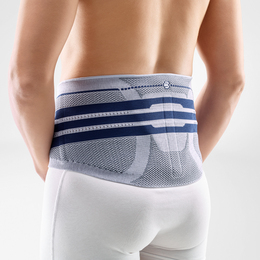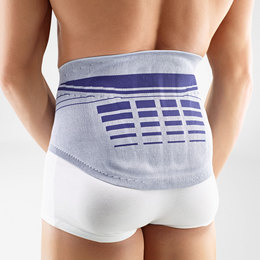Relaxation techniques reduce stress and help with lasting back pain relief. Read more about three common techniques for stress relief.
Whether at work or during leisure time, your back never takes a break. It keeps you upright and provides stabilization the entire day. It helps you carry the groceries home or lift heavy loads on the construction site. It bends for you when you cut someone’s hair or tie a child’s shoelaces.
There’s a constant demand on your back throughout the day, so it’s important to relieve your back and prevent back pain. In our five back therapy modules you can find more information for a healthy back.
Be aware of posture to protect your back
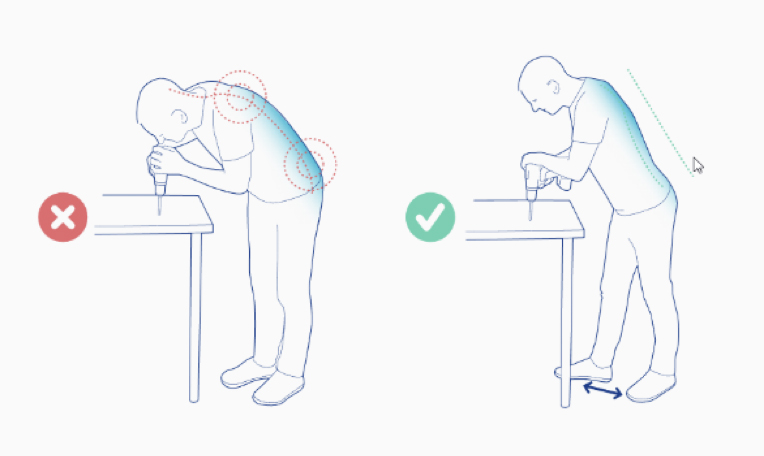
Even if it may sound trivial, pay attention to how you sit and stand. Do so while sitting or standing at work, but also during various activities, such as cooking, watching TV or waiting for the bus.
If you need to stand for extended periods, position yourself so that your feet aren’t subjected to one-sided strain, which forces your hip to stick out to the side. Your hips and head should form a vertical line, with your knees maintaining a slight bend. Try to avoid standing still for long periods of time. To practice putting an even load on your legs, stand on your toes or slowly and repetitively rock back to your feet.
It’s important that your spine maintains a natural posture when doing the same activity for an extended period of time, but what is the natural or correct posture? When in the correct posture, your pelvis should be slightly tilted forward and your chest lifted. Your shoulders should be relaxed, and you should make sure that your hip is not below your knees. In addition to an ergonomic posture, it’s also crucial to regularly vary your sitting position. This prevents tension and leads to increased blood flow to your muscles.
Bauerfeind back supports and orthoses
Bauerfeind’s lightweight, breathable back braces provide stability while allowing for full range of motion. Viscoelastic pads with nubs provide a massage effect in targeted areas to relieve pain, reduce muscle spasm and increase circulation. Due to their high degree of wearing comfort, they can support you during work and everyday activities.
There’s a constant demand on your back throughout the day, so it’s important to relieve your back and prevent back pain. In our five back braces modules you can find more information for a healthy back.

66% of working patients who weren’t able to work before being treated with a back support/back orthosis can get back to work more quickly, thanks to the product.*
Designing the workplace to care for your back
You spend a great deal of your time at work. It’s therefore critical that the design of your workplace is as back-friendly as possible. In addition to sufficient lighting, ergonomics can play an essential part in your well-being.
Your work furniture, including your desk, chair, monitor and keyboard, should be situated to your height and placed in an ideal sitting and working position. If your feet can’t reach the ground, your monitor is situated significantly above or below eye level or you have to strain to reach your keyboard and mouse, you should consider adjusting your work setup.
If you mainly work sitting down, try to take a break every 60-90 minutes. Set 5-10 minutes aside to stand or walk through the office, and consider taking a walk around your building during a lunch break. Every movement is beneficial and relieves the intervertebral disks, because they are stimulated by movement. This therefore improves their nutrient supply because when there is a reduction in pressure, the “shock absorbers” between the vertebral bodies draw in nutrients from the neighboring tissues, and when pressure is applied, they release the used nutritive fluid. Of course, relief mainly occurs at night. As the body ages it becomes particularly important to strike a balance because our intervertebral disks’ ability to regenerate decreases as we get older.
Some people may not get enough exercise, whereas others never get enough rest. If your work involves physical activity, try to ensure an appropriate workload so you don’t subject yourself to excessive strain. If possible, use carrying aids for heavy loads and take sufficient breaks.
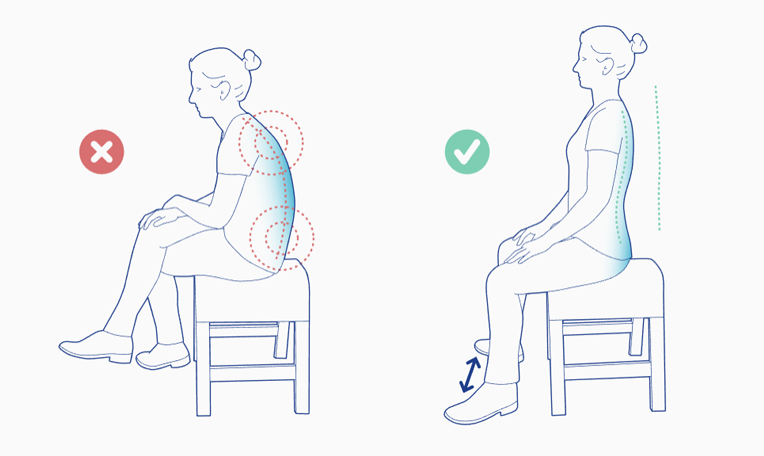
Five tips to sit dynamically:
- Sit up straight and make sure that your pelvis, chest and head are in line. The office chair should therefore be adjusted so that the seat is tilted slightly and that the thighs are also in a gently sloping position.
- Vary your sitting position to activate your back and to avoid one-sided inappropriate mechanical stress, for example by supporting yourself by resting your arms on the desk so you are sitting in a forward-leaning position.
- However, you should also use your chair’s backrest to lean back now and then to relieve pressure.
- Alternate your weight between your right and left buttock.
- Taking breaks from sitting is also part of dynamic sitting: stand up regularly and walk around a bit
How to lift and carry correctly
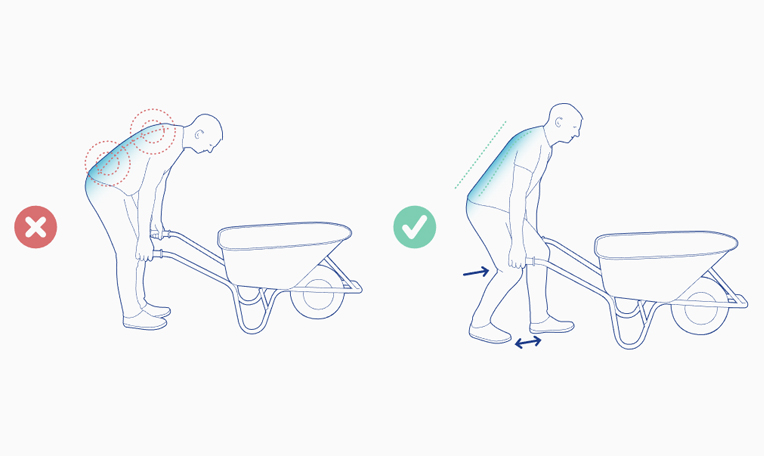
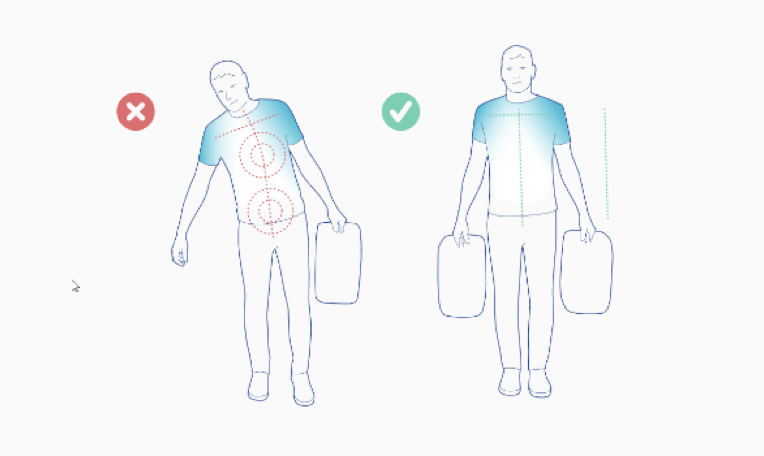
Carrying heavy objects puts plenty of strain on your back, whether you’re on a construction site, moving furniture or grocery shopping. Fortunately, you can relieve your back and spine by being mindful of back-friendly techniques for lifting and carrying heavier objects.
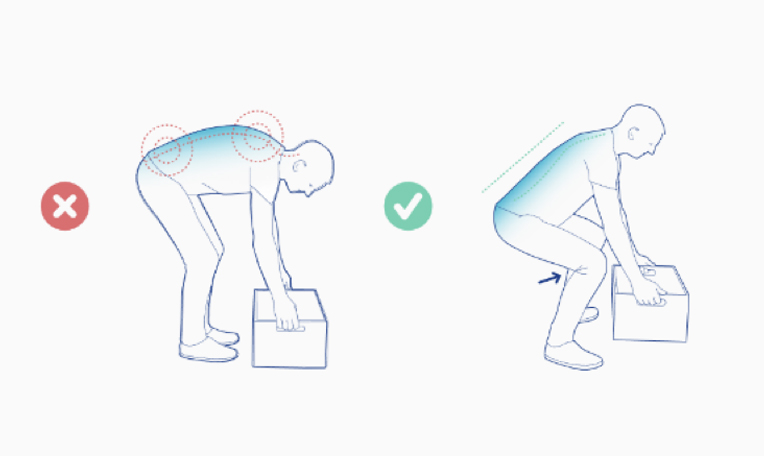
If attempting to lift something relatively heavy, stand close to the object and squat down. Hold the load close to your body, then stand up with a straightened back, using mostly the strength in your legs to relieve your back. You can also tense your back muscles to help improve stability. When you put the object down, do not bend forward. Instead, squat down from the knees with a straight back. Keep in mind that it’s better to make several trips than to carry excessive loads.
Staying active
Whether it’s reading, watching TV or playing board games, hobbies make up for what is often a stressful day. Still, try to not spend all of your spare time sitting down.

The best advice for a healthy back still remains the same: Stay active!
Try to integrate as much activity in your day to day life. If you have a good stretch in the morning after getting up, you’ll have much more energy for the day. For short distances, you can use a bicycle or walk instead of using your car. If you go for a small walk after work, you won’t just be active in the fresh air, but you’ll also have a chance to clear your head.
Ways to improve posture
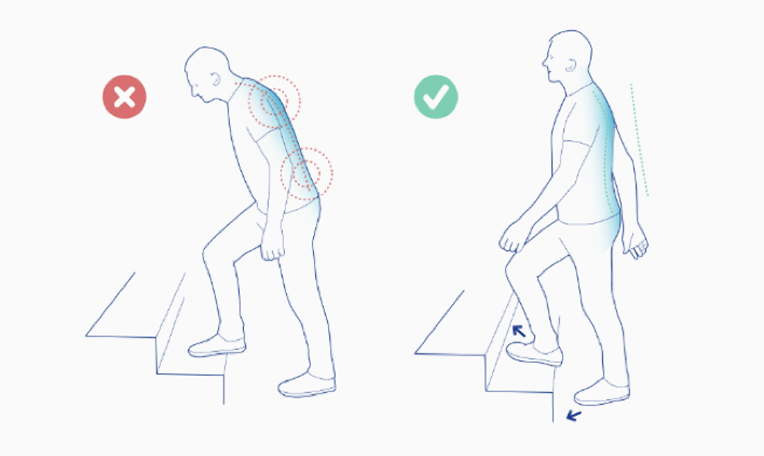
In instances of pain, especially if you experience weakened back muscles, it may be useful, to give your back additional help by wearing a back brace. A support will help to straighten your spine and achieve a healthy posture. This will stabilize your back and subject it to less strain, which can alleviate pain.
*Results from the representative survey conducted by the Allensbach Institute for Public Opinion Research on behalf of eurocom e.V. (2021): Link

